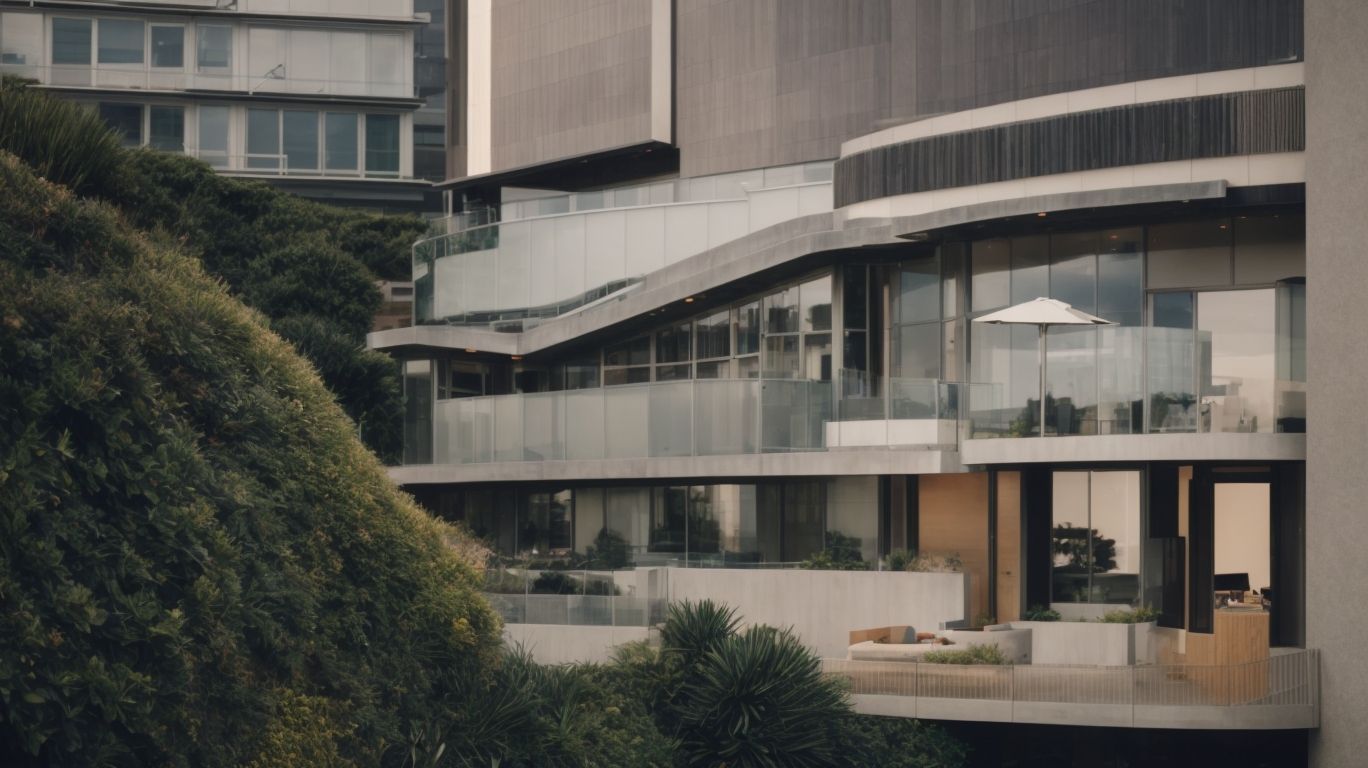
Eco-Friendly Retrofitting: Exploring Sustainable Solutions for SF Properties
Are you interested in making your property more environmentally friendly? Eco-friendly retrofitting is the solution you’ve been looking for!
In this article, we will explore the importance and benefits of eco-friendly retrofitting, as well as the key components and steps involved in the process. We will also discuss some sustainable solutions specifically tailored for SF properties, including solar panel installation, rainwater harvesting systems, and energy-efficient lighting and appliances.
If you’re ready to make your property more sustainable, keep reading to discover how eco-friendly retrofitting can benefit you and the environment.
What is Eco-Friendly Retrofitting?
Eco-friendly retrofitting involves the process of making existing properties more sustainable and environmentally friendly through renovation and the use of eco-friendly materials, design, and technology.
This approach focuses on improving energy efficiency, reducing resource consumption, and minimizing environmental impact.
By incorporating solutions such as energy-efficient appliances, low-flow water fixtures, and renewable energy systems, eco-friendly retrofitting significantly lowers utility costs while reducing the property’s carbon footprint.
In the context of San Francisco properties, sustainable solutions like green roofs, rainwater harvesting, and passive solar design can enhance the overall sustainability and resilience of buildings, aligning with the city’s environmental goals and regulations.
Why is Eco-Friendly Retrofitting Important?
Eco-friendly retrofitting is important due to its significant impact on reducing energy consumption, carbon footprint, and promoting sustainable development for properties, especially in urban areas like SF.
Eco-friendly retrofitting offers numerous benefits, including lower utility costs, decreased environmental impact, and increased property value and marketability. This approach aligns with the growing trend towards sustainable living by incorporating energy-efficient systems and sustainable materials. In urban areas like San Francisco, where space is limited, implementing eco-friendly retrofitting solutions can greatly reduce the city’s overall energy consumption and environmental impact.
What are the Benefits of Eco-Friendly Retrofitting?
The benefits of eco-friendly retrofitting are manifold, including reduced energy consumption, lower carbon footprint, and the integration of green building practices that promote environmentally responsible solutions for properties.
This approach not only leads to cost savings for property owners, but it also contributes to a healthier environment by decreasing greenhouse gas emissions and reliance on non-renewable resources.
In the context of San Francisco properties, eco-friendly retrofitting can improve indoor air quality, enhance thermal comfort, and boost overall property value. The wider community benefits from reduced strain on local utilities and a more sustainable urban infrastructure, fostering a greener and healthier cityscape.
What are the Key Components of Eco-Friendly Retrofitting?
The key components of eco-friendly retrofitting revolve around energy efficiency, water conservation, waste reduction, and the integration of renewable energy sources to create sustainable and environmentally conscious properties.
Energy efficiency plays a critical role in reducing a property’s overall energy consumption. This results in lower utility costs and a smaller carbon footprint.
Water conservation measures, such as low-flow fixtures and efficient irrigation systems, help minimize water usage. This addresses a crucial sustainability aspect in urban settings like San Francisco.
Waste reduction strategies, including recycling programs and composting initiatives, aid in minimizing the environmental impact of property operations.
The integration of renewable energy sources, such as solar panels or wind turbines, contributes to clean energy generation and reduces dependence on non-renewable resources.
Energy Efficiency
Energy efficiency is a fundamental aspect of eco-friendly retrofitting, involving the implementation of energy-saving measures, green technologies, and sustainable construction practices to reduce energy consumption and promote environmentally friendly solutions.
Green retrofits are essential for improving energy efficiency in buildings. This can be achieved by integrating energy-efficient appliances, improving insulation, and utilizing renewable energy sources like solar panels and wind turbines. These measures not only lead to cost savings for building owners but also contribute to a healthier and more sustainable environment for future generations.
Sustainable construction practices also play a crucial role in minimizing the environmental impact of buildings. This includes using recycled materials and implementing efficient building design. By incorporating these practices, we can further enhance the energy efficiency and sustainability of our structures.
Water Conservation
Water conservation is a crucial component of eco-friendly retrofitting, aiming to minimize water usage and implement sustainable water management practices within properties to reduce environmental impact.
This approach promotes efficient utilization of water resources, recognizing the vital role of water in sustaining ecosystems and human well-being.
By integrating sustainable water management practices, such as rainwater harvesting, greywater recycling, and low-flow fixtures, eco-friendly retrofitting can significantly reduce water consumption.
Implementing advanced technologies like smart irrigation systems and water-efficient appliances further enhances the overall sustainability of properties, aligning with the global push towards environmental stewardship and resource optimization.
Waste Reduction
Waste reduction is an integral aspect of eco-friendly retrofitting, focusing on green initiatives and sustainable practices that minimize waste generation and promote eco-friendly design and construction.
Eco-friendly retrofitting prioritizes waste reduction and embraces circular economy principles. Its goal is to minimize the use of virgin resources and divert waste from landfills. This is achieved through efficient material sourcing, construction waste management, and design strategies that incorporate recycled and renewable materials.
By reducing environmental impact, eco-friendly retrofitting contributes to a more sustainable built environment. This aligns with the overarching goal of sustainable development, emphasizing responsible resource management and conservation in construction and building operations.
Renewable Energy Sources
The integration of renewable energy sources is a key component of eco-friendly retrofitting, promoting sustainable development and the establishment of green infrastructure for properties to reduce dependency on non-renewable resources.
This implementation includes solar panels, wind turbines, and geothermal systems, which harness natural elements to generate clean energy for heating, cooling, and electricity.
By utilizing these renewable energy solutions, buildings can significantly decrease their carbon footprint and reliance on traditional energy sources, contributing to a more sustainable and eco-friendly urban landscape.
The adoption of these technologies in retrofitting projects aligns with the global shift towards green infrastructure, creating a more resilient and environmentally conscious built environment.
What are the Steps of Eco-Friendly Retrofitting?
The steps of eco-friendly retrofitting involve assessment and planning, followed by the implementation of sustainable solutions, and ongoing monitoring and maintenance to ensure the long-term effectiveness of the eco-friendly upgrades.
During the assessment phase, it’s crucial to thoroughly evaluate the existing structure’s energy usage, waste management systems, and overall environmental impact. This evaluation helps in identifying specific areas for improvement.
Subsequently, careful planning involves selecting suitable sustainable solutions, considering factors such as energy-efficient technologies, renewable energy sources, and eco-friendly materials. The implementation phase sees these plans put into action, with a focus on efficient installation and utilization of sustainable resources.
Ongoing monitoring and maintenance play a pivotal role in guaranteeing the sustained effectiveness of the eco-friendly adjustments, requiring regular checks, adjustments, and potential upgrades as needed.
Assessment and Planning
The initial phase of eco-friendly retrofitting involves a comprehensive assessment of the property’s energy consumption and environmental impact, followed by strategic planning for the integration of sustainable solutions.
This critical phase sets the stage for identifying key areas where energy efficiency can be improved, such as insulation, lighting, and HVAC systems.
A holistic approach is essential, considering factors like local climate, building orientation, and existing infrastructure.
Professionals often utilize advanced energy modeling and simulation tools to evaluate different retrofit options and their potential impact.
Careful consideration is given to the life cycle costs and benefits of various sustainable technologies, ensuring that the chosen solutions align with long-term environmental and financial goals.
Implementation
The implementation phase of eco-friendly retrofitting involves the actual integration of sustainable solutions and improvements, including energy-efficient upgrades, green technologies, and sustainable building materials.
This stage requires careful planning and execution to ensure that the chosen energy-efficient upgrades effectively reduce energy consumption while maintaining or enhancing the building’s performance.
Green technologies, such as solar panels and smart heating systems, play a crucial role in maximizing energy efficiency. The use of sustainable building materials, such as recycled steel and low-impact insulation, not only reduces environmental impact but also contributes to the overall durability and longevity of the retrofitting project.
Monitoring and Maintenance
The final phase of eco-friendly retrofitting involves ongoing monitoring and maintenance to ensure the sustained effectiveness of sustainable upgrades, energy-efficient systems, and green initiatives within the property.
This crucial stage ensures that the investments made in energy-efficient technologies continue to deliver the intended environmental and financial benefits.
Ongoing monitoring allows for the identification of any issues or inefficiencies, enabling timely intervention to maintain optimal performance.
Regular maintenance also plays a vital role in preserving the longevity and functionality of eco-friendly systems, ensuring that they operate at peak efficiency.
Effective monitoring and maintenance can encompass various measures, including energy audits, performance evaluations, equipment inspections, and proactive repairs or replacements, all contributing to the long-term success of sustainable retrofits.
What are Some Sustainable Solutions for SF Properties?
Sustainable solutions for SF properties encompass a range of eco-friendly initiatives, including solar panel installation, rainwater harvesting systems, green roof installations, and energy-efficient lighting and appliances, as well as composting and recycling programs to promote sustainable living.
These solutions contribute to reducing the property’s carbon footprint and overall environmental impact. By harnessing solar energy through panel installation, properties can lower their reliance on non-renewable energy sources while also benefitting from potential energy cost savings.
Rainwater harvesting systems provide an alternative water source for irrigation, decreasing the demand on traditional water supplies. Green roof installations offer insulation, improve air quality, and mitigate urban heat island effects. Investing in energy-efficient lighting and appliances can further cut down electricity consumption.
Implementing composting and recycling programs not only reduces waste but also nurtures an environmentally conscious community. Incorporating sustainable materials in construction enhances durability and minimizes resource depletion, promoting a holistic approach to eco-friendly property management.
Solar Panel Installation
The installation of solar panels is an effective sustainable solution for SF properties, leveraging renewable energy to reduce dependency on traditional power sources and lower the overall carbon footprint.
By harnessing energy from the sun, solar panels provide an eco-friendly alternative to fossil fuels, subsequently contributing to the reduction of greenhouse gas emissions.
In addition to environmental benefits, solar panel installations can lead to long-term cost savings for homeowners through reduced energy bills. When strategically positioned, solar panels can optimize energy production, maximizing their efficiency.
It is important for property owners to consider factors such as roof orientation, shading, and local regulations when planning for solar panel installations to ensure optimal performance and compliance with standards.
Rainwater Harvesting Systems
Rainwater harvesting systems offer sustainable water management solutions for SF properties, capturing and utilizing rainwater for various purposes, reducing demand on traditional water sources and promoting eco-friendly initiatives.
Rainwater harvesting systems collect rainwater from rooftops and other surfaces. This provides an alternative water source for activities like irrigation, toilet flushing, and laundry. Additionally, it helps prevent stormwater runoff, which reduces the strain on municipal drainage systems.
Not only does rainwater harvesting contribute to a decrease in water bills, but it also reduces reliance on treated water. This makes it a cost-effective and environmentally friendly choice for property owners in urban areas like San Francisco.
Green Roof Installation
The installation of green roofs presents an innovative sustainable solution for SF properties, promoting energy efficiency, biodiversity, and improved air quality while reducing the urban heat island effect.
Eco-friendly roof systems utilize vegetation to insulate buildings, reducing the need for artificial cooling in the summer and heating in the winter. This results in significant energy savings.
Green roofs also have numerous environmental benefits. They mitigate stormwater runoff, enhance biodiversity by providing habitat for birds and insects, and contribute to cleaner air by absorbing carbon dioxide and filtering pollutants. Additionally, their ability to lower urban temperatures and combat the heat island effect is crucial for creating more comfortable and healthy urban environments.
Energy-Efficient Lighting and Appliances
The implementation of energy-efficient lighting and appliances is a practical sustainable solution for SF properties, reducing energy consumption and promoting eco-friendly upgrades within the property.
By incorporating LED lighting, smart thermostats, and ENERGY STAR-rated appliances, SF properties can significantly lower their energy bills while minimizing their environmental footprint.
Energy-efficient lighting not only contributes to cost savings but also enhances the overall ambiance with modern, stylish fixtures. Similarly, efficient appliances such as refrigerators, washing machines, and HVAC systems not only consume less electricity but also operate with improved functionality and durability, offering long-term benefits to property owners.
Integrating renewable energy sources such as solar panels and utilizing smart home automation further elevate the efficiency and sustainability of SF properties.
Composting and Recycling Programs
Composting and recycling programs play a significant role in promoting sustainable living for SF properties, reducing waste generation and contributing to eco-friendly initiatives within the community.
These initiatives not only help in minimizing the environmental impact of waste but also encourage community engagement through collective efforts to reduce, reuse, and recycle.
By participating in composting and recycling programs, individuals and businesses in San Francisco are actively contributing to the conservation of natural resources and the reduction of greenhouse gas emissions. These programs foster a sense of environmental responsibility and awareness, promoting a greener and cleaner community for present and future generations.
Use of Sustainable Materials in Construction
The use of sustainable materials in construction is a foundational approach for promoting eco-friendly upgrades and sustainable solutions for SF properties. This not only reduces environmental impact but also fosters green infrastructure.
Sustainable materials, such as bamboo, reclaimed wood, recycled steel, and low-impact concrete, offer numerous benefits. They contribute to energy efficiency, reduce waste, and lower carbon footprint during the construction process.
These materials also enhance indoor air quality, provide better insulation, and often require less maintenance, leading to long-term cost savings for property owners. By choosing sustainable materials, property owners can not only reduce their environmental impact but also create healthier and more resilient living spaces, contributing to a more sustainable future for the city.




No Comments